The Flavor of Extremadura, Spain
By Paul Shoul
Updated November 3, 2021
The sweet fruit of a hard life.
A culinary journey.
In Extremadura, three hundred huge Iberico pigs approach like a herd of buffalo, raising dust, hooves vibrating the earth below our feet. “Don’t be afraid,” Pepe said with a smile, “they are friendly but don’t let one get a hold of your foot!”
We are on the pastures of Dehesa de Solana, Jamón Ibérico producers in Cáceres, an autonomous community of Extremadura, Spain. Our guide for the day is Pepe Alba, master carver and owner of Turismo del Jamon.com.
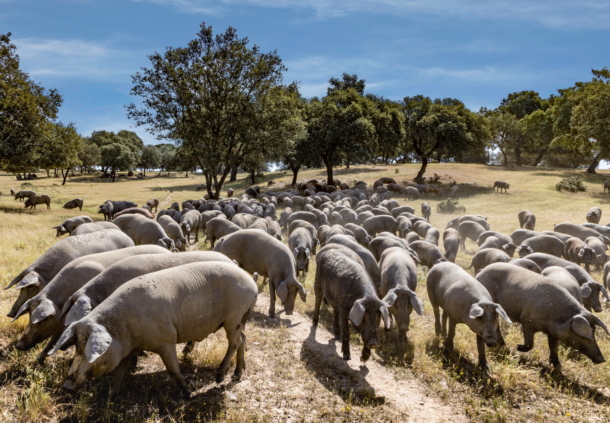
He turns and walks directly through the herd, they follow as he leads them down to the water to wallow in the cool mud. The pied piper of pigs.
In the south west of Spain, on the border of Portugal, is Extremadura. The name stems from the Latin words meaning “ Outermost Hard”. It is a land of extremes. The bulk of the landscape is the seemingly endless dry brown Dehesa grasslands and oak pastures where black Iberian pigs roam and fighting bulls are raised. To the west, in the mountains and fertile valleys, the sweetest cherries in Spain are grown as are red peppers for the smoked paprika, Pimenton de la Vera, that is so essential to Spanish cooking.
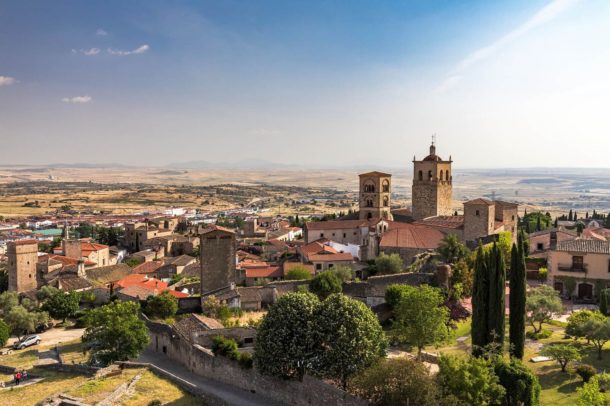
Romans and Moors fought for this land from castles that are still the center of many towns. In the 1500’s, men like Cortez and Pizarro set forth from “The land of the conquistadors” for their bloody campaigns to conquer the Incas and Aztecs. From intense environments come intense flavors and personalities. The olive oil is richer, the wines are deeper, even the people are a little more concentrated. As with all of Spain, food is king. Outdoor cafes with hundreds of outside tables ring every central plaza in Extremadura. Meals are leisurely, the bars can be crowded and often loud and fun. Thankfully, the tradition of free tapas still exists here. Order a drink, and a tapa appears.
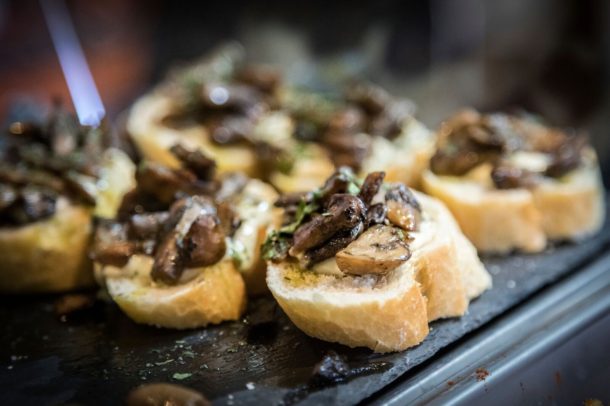
crostini
These are not the stale bowl of peanuts or chips you find in an American bar. Bar Tapas are small plates of flavor bombs. It could be local olives or Papas Brava made with pimentos de la Vera, or fried Iberian pork, courgettes with salt cod, or a hundred other local specialties. The places with the best tapas are always packed.
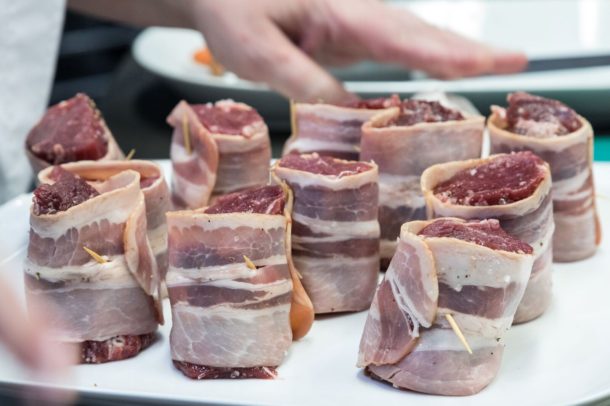
Here are few ideas about what to do, see, and eat in this region; also some recipes to try out at home to taste the flavor of Extremadura.
The Jerte Valley:
In the Cafe Bar Rincon de Yuste in the Plaza de Espana in Cuacos de Yuste, we sat down for a midday beer during a drive through this stunning landscape of mountains, valleys, river gorges, and endless rows of cherry trees with Garganta de los Infiernos Guides.
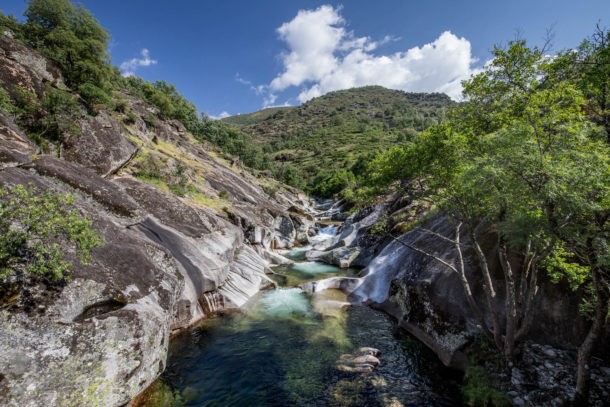
Extremadura
Even though lunch was just an hour away, the complimentary tapas in this little place were irresistible: migas, (fried breadcrumbs with bacon, garlic and pimenton), sausages and wild mushrooms with bread and stewed Iberian pork. Tapa tip: pour the juice from the stewed pork into the migas.
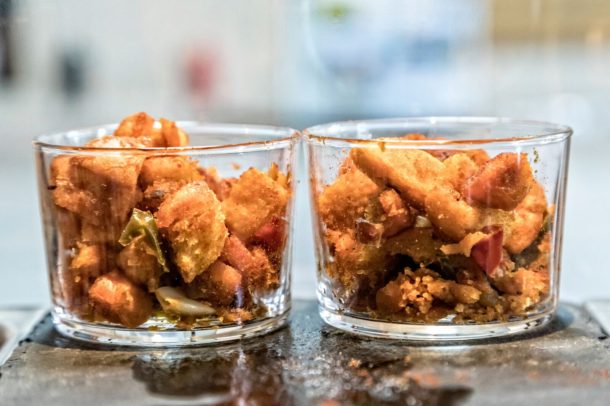
migas
We visited the Garganta de los Infiernos (Hell’s Gorge) nature reserve; picked cherries from one of our guides orchards and toured the production facility of Las Hermanas Paprika producers in Cuacos de Yuste. Breaking with the male-dominated industry, it is the only female-owned producer in Spain.
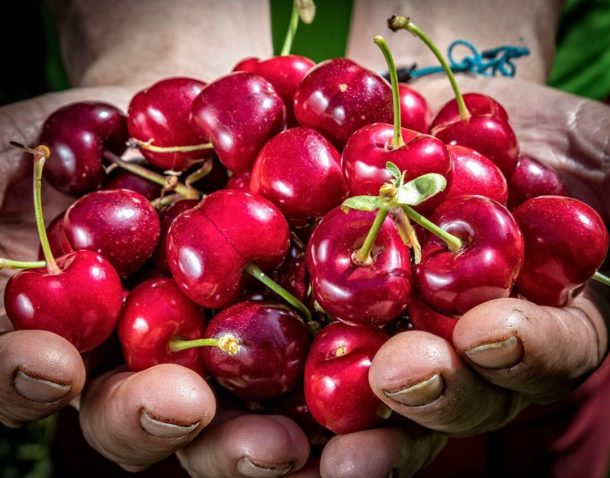
The unique flavor of Pimenton de la Vera comes from smoking red peppers for two weeks over oak fires. Turned every two hours, the resulting flavor is unmistakable.
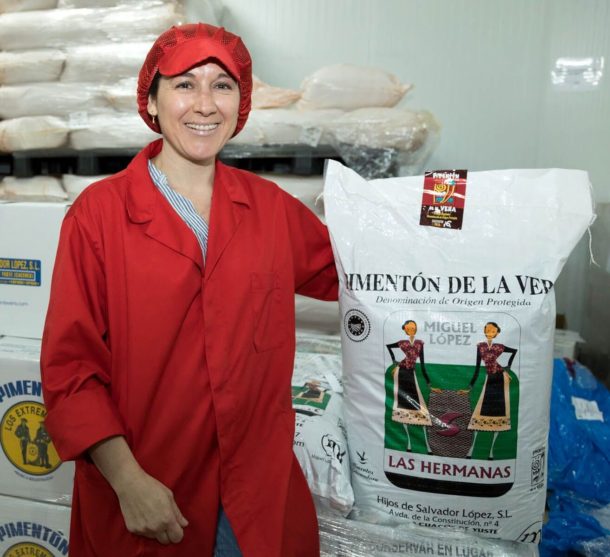
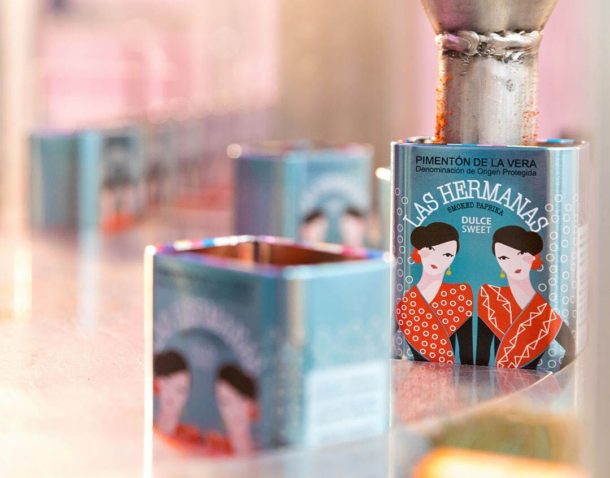
Paraje Las Gallardas, 10612
Jerte, Spain
+34 689 28 21 16
The view of the Jerte valley is spectacular from this rural restaurant. Cherry gazpacho, Torta del Casar, (a naturally soft cheese, considered one of the best in Spain), orange salad with cherry jam and paprika, Patatas Revolconas: mashed potatoes with olive oil, garlic, bacon and paprika. Finishing with a platter of amazing grilled goat. Topped off with a shot of the local sweet and strong, Cerza Cherry liquor.
Chef ‘Dori” was gracious enough to allow me in her kitchen for the recipes.
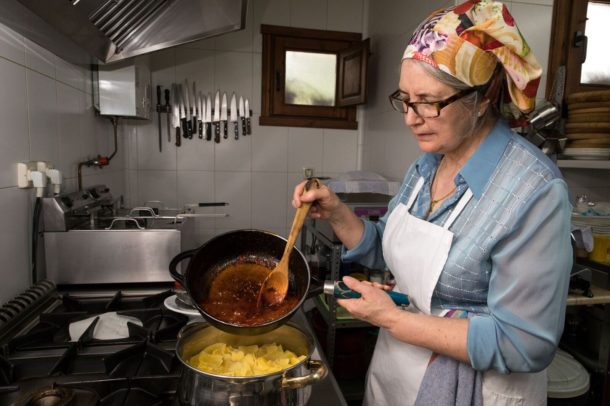
Chef Dori
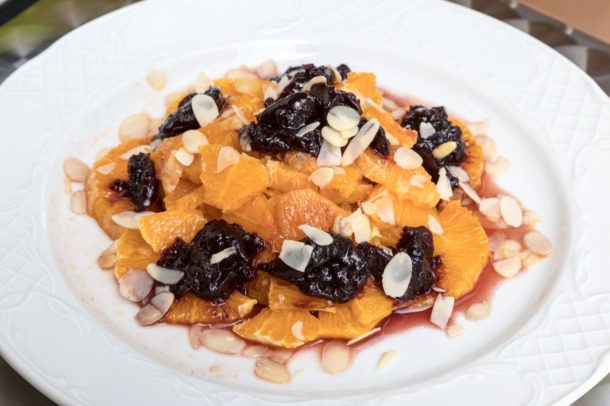
Orange Salad with Cherry Confit
MIX THE INGREDIENTS IN A BOWL
- Salt and finely chopped garlic
- Red wine vinegar
- Pine nuts
- Sweet and sour smoked paprika from la Vera
- Olive oil
- Add the oranges , peeled and cut into small pieces to the mix
Serve on a plate; top with the cherry confit (Lemon juice, sugar and cherries)
Sprinkle with roasted almonds.
Patatas Revolconas
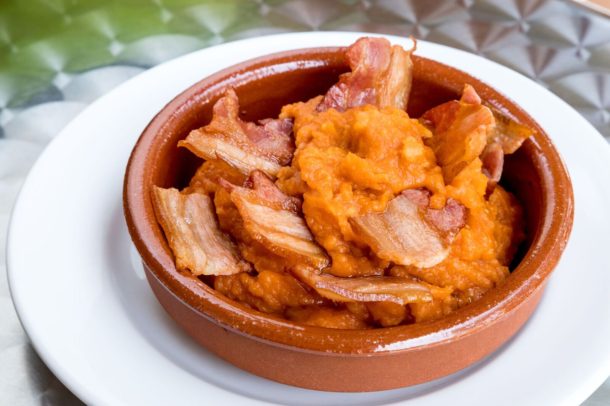
Boil peeled potatoes until tender and set aside.
Deep-fry the bacon in olive oil – set aside the bacon
Turn the burner off. When the oil is warm add the following to the oil:
- finely chopped garlic
- bittersweet smoked paprika from la Vera ( 4 tablespoons)
- 4 tablespoons of cold water
Mix all the ingredients.
Smash the potatoes in a mortar and add all the mixed ingredients.
Reheat. (this dish must be served hot)
Trujillo
The Castillo de Trujillo
From the top of the castle walls, the view of the medieval streets and surrounding landscape is spectacular. It feels like a movie set and in fact, was the setting for the home of the Lannisters in season 7 of the Game of Thrones.
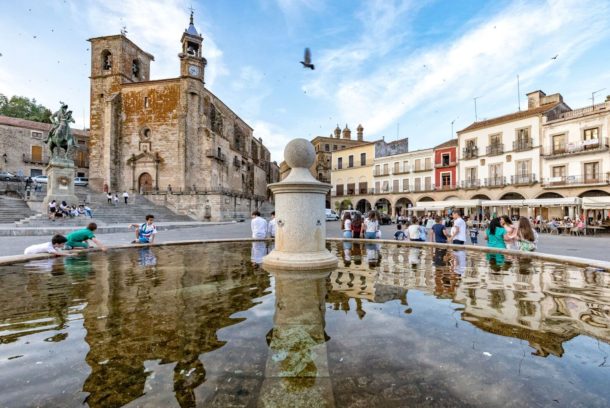
The game was real for Trujillo. This was the home of Francisco Pizzaro, the conquistador who brought his wealth back home to enrich the town. Trujillo’s main square is one of the most picturesque central plazas in all of Spain.
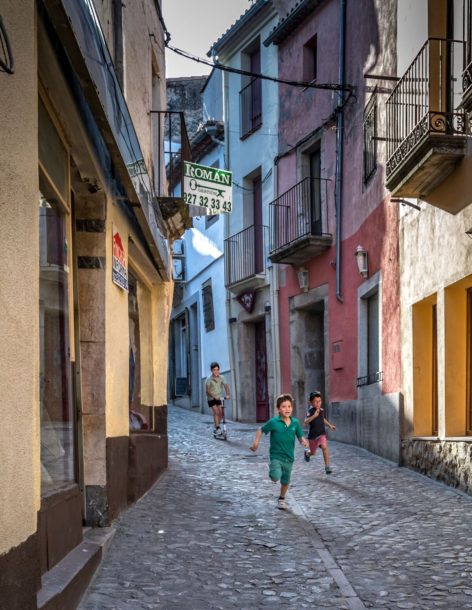
Eat:
Right on the Plaza Mayor with fresco seating. Great drinks, amazing tapas, cool relaxed atmosphere. Everything I adore about Spain.
The Parador of Trujillo is located in the former convent of Santa Clara. Paradores in Spain are a fantastic value, located within historic buildings with beautifully appointed rooms and highlighting regional gastronomy in their restaurants. The oxtail was superb.
Also located on the Plaza Mayor, this was one of my favorite restaurants in Extremadura. The salad topped with baby squid and the House specialty “ Cod Bizcocho” ( salt cod with ………. were fantastic. The meal ended with bottles of herb and almond liqueur.
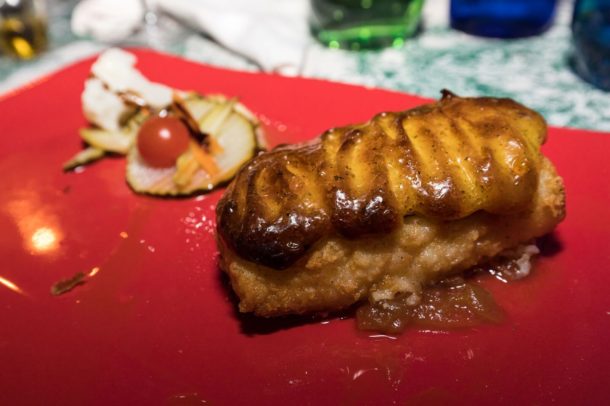
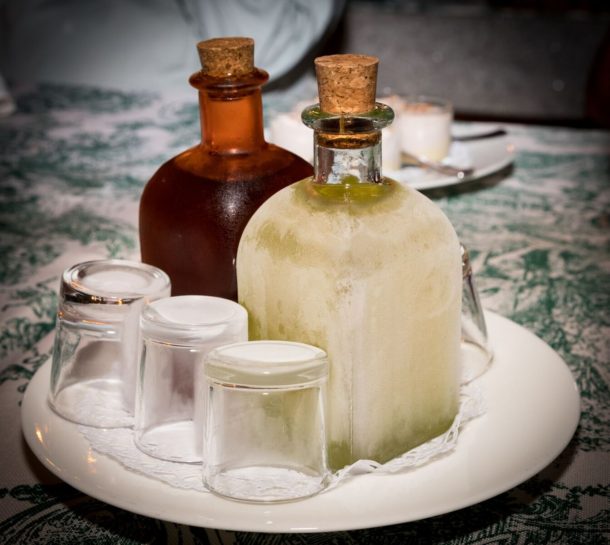
Almond Liqueur
Plasencia
Located on the banks of the Jerte River and Ruta de Plata (the Silver Trail) the walled market city of Plasencia was once ruled by the Romans and the Moors. In the 13th century, The Charter of Plasencia declared peace between Christians Jews and Muslims living in the city. Many Spanish nobles moved here and it became a center for Jewish commerce.
Remains of the Roman aqueduct still stand and there is a plethora of historic cathedrals, churches museums, and sights to see in the old city. Really beautiful, save a day to explore.
Parador de Plasencia
Plaza San Vicente Ferrer,
s/n10600 Plasencia Cáceres
+34 927425870
Located in the old part of the city in the historic Santo Domingo Monastery. I did not stay here but had the chance to dine. Here is the menu: asparagus cold soup with Iberian ham, cod loin Monacal style with spinach and potato cream, Iberian pork fillet baked with wine sauce and sauteed apple, Torta del Casar with paprika from “La Vera”, mushroom cod croquette, smoked trout with avocado, “Zorongollo” – roasted peppers, tomato and garlic with tuna fish belly”. Wowza.
Caceres:
Designated a World Heritage City in 1986, Caceres is a lively town with a beautiful plaza and historic quarter of Roman, Islamic, Northern Gothic, and Italian Renaissance influence. If your budget allows, Caceres is the home of two-star Michelin restaurant Atrio, headed by chef Toño Pérez. Celebrating the local ingredients of the region, the 12-course tasting menu, (149 EUR) was inspirational; Carrot with sea anemone and fennel, taro pot sticker with tomato and cumin, bloody mary frozen tomato and green onion ice-cream, marinated shrimp, oyster grilled with white vermouth, grouper ceviche with passion fruit, hake with almonds cauliflower and turnip emulsion, crawfish soup, tuna with sweet potato and Iberian pig jowl and sirloin roasted in a crisp herbal coating. Madre de Dios!
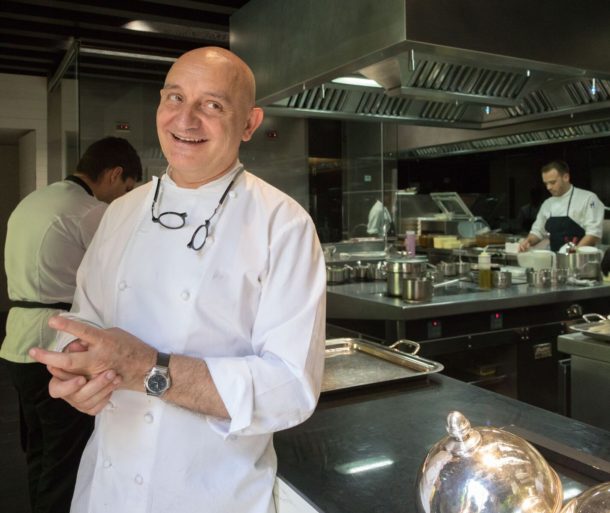
Tono Perez
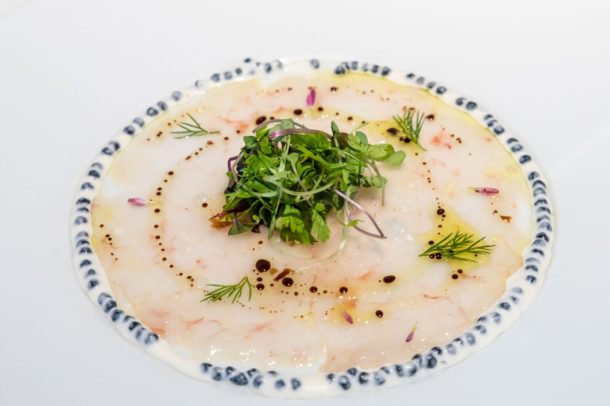
Merida
Merida, the capital of Extremadura, was designated a UNESCO World Heritage site in 1993. It is home to the most well preserved Roman ruins in the world;
The Roman Gladiator amphitheaters, the longest Roman bridge in Spain and the National Museum of Roman Art. The amphitheaters were excavated in the 1970’s. Part of the reason they are so well preserved is that until then they were a garbage dump and filled with dirt. Any fan of history or Gladiator movies will be captivated by this site.
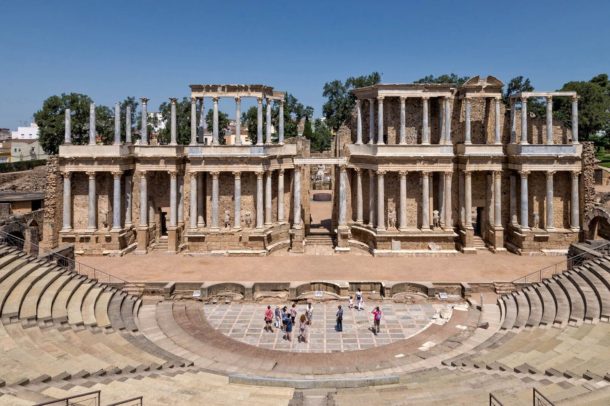
roman theatre merid

Calle San Salvador, 7,
06800 Mérida, Badajoz, Spain.
+34 924 03 71 86
This is a hands-on cooking class, It is easy to read a recipe, but when you cook side by side with a skilled chef, you will learn techniques that will last a lifetime. The kitchen is decked out, the knives are sharp and you will eat the fruits of your labor. Super fun. We made Ajo Blanco soup, pisto de primavera with a poached egg, Iberian tenderloin with mushroom and fruit sauce and puff pastry with wild mushrooms. Highly recommended.
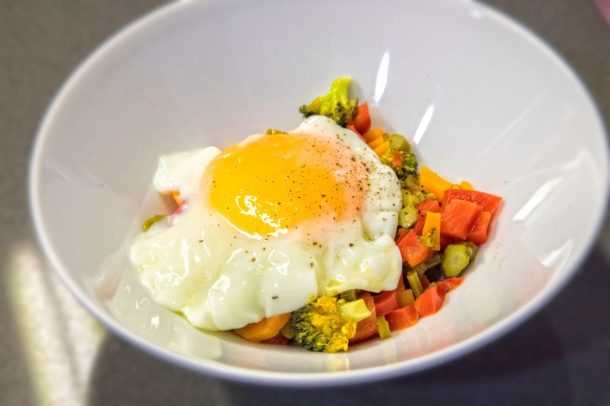
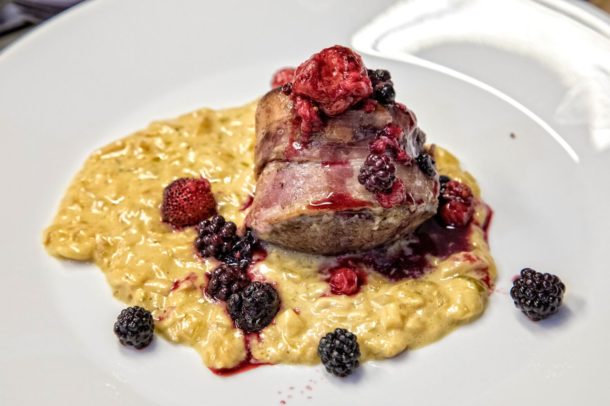

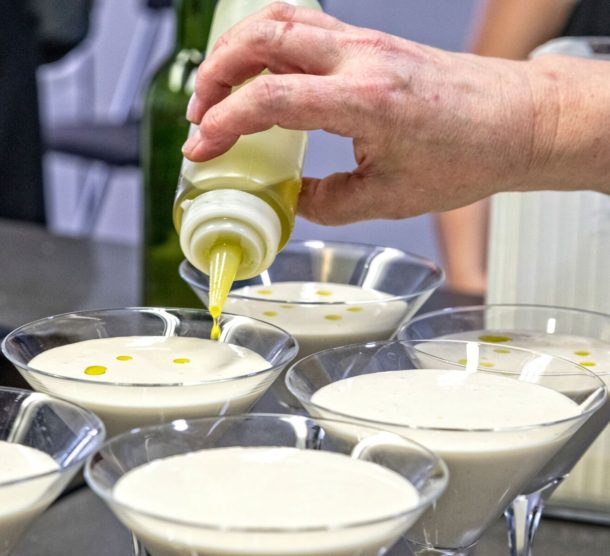
Connected to the Oak Tree Meadows
Black Iberian pigs have been bred in Extremadura for thousands of years. They are intimately connected to the managed oak tree meadows of the Dehesa. The criteria for achieving the designation of Jamón Ibérico Bellota (the highest ranking) is intense. As the pigs mature, they are fed on grain, but for the last four months of their lives (The “Montanera”) they feed solely on acorns. They are raised free-range, one pig for every two hectares (5 acres) of Dehesa pasture. During that time they double in weight. Acorns are high in oleic acid, thus the fat is similar to olive oil, monounsaturated and good for you. Guilt free ham. The ham legs are trimmed, shaped and covered in sea salt for 3 weeks, then hung at specific temperatures and humidity from one to 3 years.
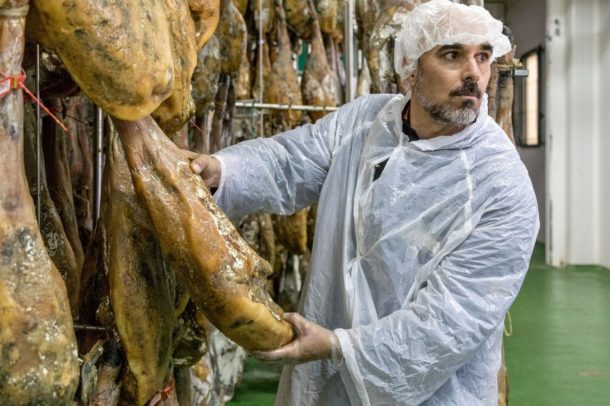
Jamón Ibérico Bellota
From birth to ham, the process can take 5 years. It is a hefty price of up to 1,000 dollars per leg of the best Jamón Ibérico Bellota, but once you’ve tasted the buttery feel of the fat as it melts on your tongue and the nutty luscious savory-sweet meat, the price seems like a bargain. If you are a foodie or just a traveler, this is a must do. You can arrange to stay at the rural farm house, visit and learn about the curing process, take a carving class with Pepe and eat your weight in the best ham in the world, Jamón Ibérico Bellota.
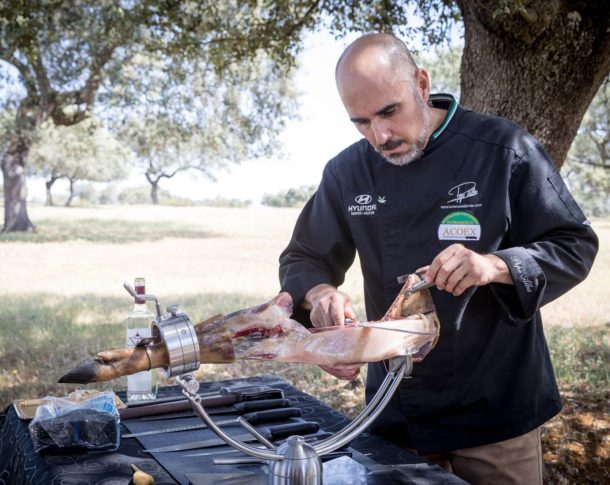
Jamón Ibérico Bellota
Final Thoughts:
There is a saying in Spain, “Sobremesa”, which roughly translates as the time spent after eating when the conversation is still going on. More often than not, after the politics and gossip, the talk turns to planning for the next meal. It could go on for hours. “Fast food” does not sit well in a culture that likes to linger. You will never be rushed from your table. Every traditional dish in Spain has a story, and each ingredient, a pedigree. Trust me, go to Extremadura and have a meal. By the end of it, you will know the story of every dish, where the ingredients came from and probably meet the farmer. This is the good stuff.
Hotels I’ve Stayed in and Recommend.
Plaza de Ansano, 1
10600 Plasencia
Plaza de España, 19
06800 Mérida, Badajoz
Plaza San Juan 11
10003 Cáceres
Tel: +34 927 215 800
Plaza del Campillo,
10200 Trujillo, Cáceres
Tel: +34 927 45 89 00









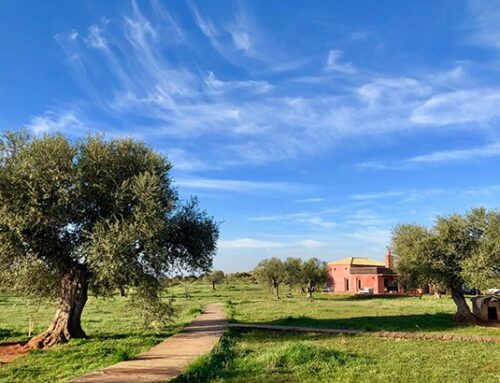
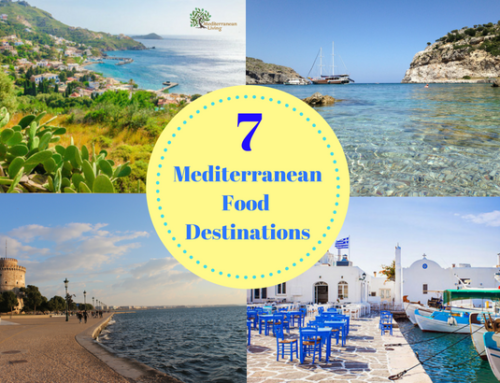
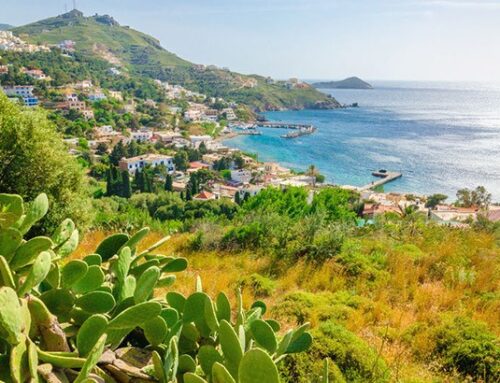
Bill Bradley, R.D. says:
Bill Bradley, R.D. says:
Bill Bradley, R.D. says: